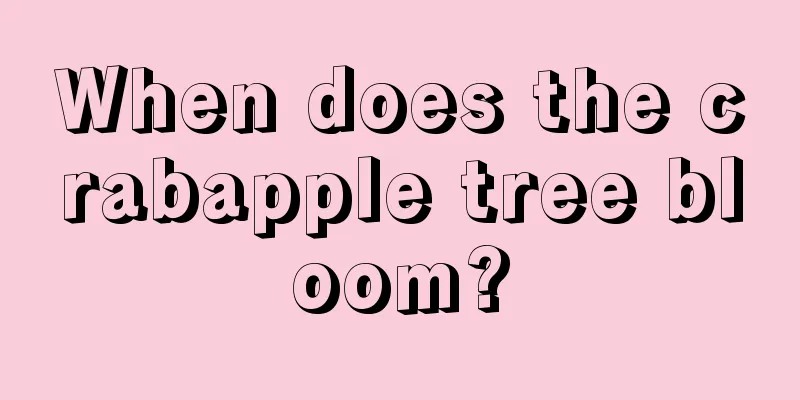Pollution-free tea garden planting technology

|
As a major tea producing country, tea is grown in many regions of China. Pollution-free tea refers to tea that is grown in a healthy and green environment, with no pesticide residues, heavy metals, harmful microorganisms, etc. Here is an introduction to pollution-free tea garden planting techniques . 1. Variety selection Pollution-free tea varieties should be selected with strong disease resistance and high yield, and should be selected according to local conditions and the requirements of tea planting. The introduction of foreign varieties requires quarantine first to prevent them from bringing in pathogens and affecting the growth of tea. Combined with regional cultural influences, appropriate selection and standardized planting should be made based on local water, soil and light. 2. Tea tree planting Do a good job of fertilizing before planting, mainly using organic fertilizer and mineral fertilizer , and the base fertilizer depth should be controlled at 40cm. When planting tea seedlings, the rhizome should be 3 cm away from the soil surface and the root system should be 10 cm away from the base fertilizer. When transplanting tea seedlings, choose the trench planting method. During the planting process, the tea roots will be stretched out and covered with fine soil, so that the roots of the tea seedlings are in good contact with the wet soil. After planting, make sure not to water the plants enough, and sprinkle fine soil around the roots to prevent moisture from evaporating from the soil. In addition, water the plants 30 days after planting to ensure that all seedlings are healthy. 3. Replanting Newly planted tea gardens may have missing stumps, so planters must replant and add fertilizer in a timely manner to catch up with the early planting of tea trees. 4. Planting shade trees Trees planted in protective forests around tea gardens are required to adapt to the local temperature environment, be tall, wind-resistant, grow fast, and have no common diseases and pests with tea trees, so they have great economic value. The shade trees and street trees in the park are selected from species with deep root systems, tall crowns and few diseases and pests. 5. Scientific fertilization When applying fertilizer, choose base fertilizer and topdressing method. Use organic fertilizer for base fertilizer. In autumn, dig trenches to apply fertilizer, and keep the depth above 20cm before topdressing. According to the growth law of tea trees, dig trenches and apply fertilizer 20 days after picking. The controller depth is maintained at about 10cm, and a little foliar fertilizer is used based on the growth conditions of the tea trees. However, it is necessary to stop using the varieties registered by relevant departments 10 days after picking. 6. Pruning management Young tea trees are pruned to ensure their crown. For mature trees, light pruning and deep pruning are mainly performed. Light pruning is performed once a year to prune the branches and leaves above the crown, while deep pruning is performed to remove excess branches and leaves from the crown to ensure sufficient light. 7. Prevent flooding and cold In summer, attention should be paid to drainage control in tea gardens to avoid affecting the soil. The rainy season is relatively dry, so it is necessary to irrigate the tea trees in autumn to ensure that the soil is sufficiently moist. The main measures for young trees to resist drought and heat include promoting early seedlings, watering, weeding, shading, and covering the ground with grass. The main measures to prevent cold and frost include cultivating strong seedlings in autumn, irrigating over the winter, laying grass, cultivating soil for tea plants and covering the ground with film. That’s it |
<<: How does the fortune tree survive the winter? Why do its leaves turn yellow?
Recommend
Can moss be used to grow succulents?
Can moss be used to grow succulents? Moss can be ...
Key points of high-yield planting and management technology of loofah
Luffa plants have a high demand for fertilizer , ...
Is round-leaf arrowroot poisonous?
1. Whether the plant is toxic: There are many cla...
When does Mirabilis jalapa bloom?
When does it bloom? Mirabilis jalapa, also known ...
What fertilizer is best for Chlorophytum comosum
1. Fertilizer If we want to add fertilizer to it,...
How to use sodium hypochlorite disinfectant and precautions
Sodium hypochlorite disinfectant is a liquid disi...
Cultivation methods and precautions of Camellia sasanqua
Camellia sasanqua is an evergreen small tree of t...
How often should I water my ivy?
How often should I water my ivy? Ivy is a common ...
Where is the suitable place for planting Dendrobium candidum and what is the suitable growth environment
Dendrobium officinale planting area As more and m...
Is raspberry a shade or sun-loving plant?
Do raspberries prefer shade or sun? Raspberries l...
Can leftover beer be used to water flowers? What flowers should be watered?
Can leftover beer be used to water flowers? Lefto...
What are the benefits of eating raw onions?
1. The efficacy and function of raw onions 1. Pre...
How to propagate Milan flowers
Cutting propagation Cuttings can be made from har...
Do newly repotted orchids need watering? How to water them?
1. Do newly repotted orchids need watering? Wheth...
Can Magnolia be propagated by cuttings? When is the best time to do so?
Can Magnolia be propagated by cuttings? Magnolia ...









